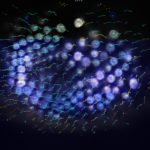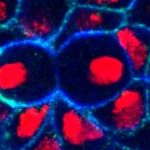Link to Pubmed [PMID] – 34249350
Link to DOI – 10.12688/f1000research.27395.2
F1000Res 2020 ; 9(): 1374
The advent of large-scale fluorescence and electronic microscopy techniques along with maturing image analysis is giving life sciences a deluge of geometrical objects in 2D/3D(+t) to deal with. These objects take the form of large scale, localised, precise, single cell, quantitative data such as cells’ positions, shapes, trajectories or lineages, axon traces in whole brains atlases or varied intracellular protein localisations, often in multiple experimental conditions. The data mining of those geometrical objects requires a variety of mathematical and computational tools of diverse accessibility and complexity. Here we present a new Python library for quantitative 3D geometry called GeNePy3D which helps handle and mine information and knowledge from geometric data, providing a unified application programming interface (API) to methods from several domains including computational geometry, scale space methods or spatial statistics. By framing this library as generically as possible, and by linking it to as many state-of-the-art reference algorithms and projects as needed, we help render those often specialist methods accessible to a larger community. We exemplify the usefulness of the GeNePy3D toolbox by re-analysing a recently published whole-brain zebrafish neuronal atlas, with other applications and examples available online. Along with an open source, documented and exemplified code, we release reusable containers to allow for convenient and wide usability and increased reproducibility.


